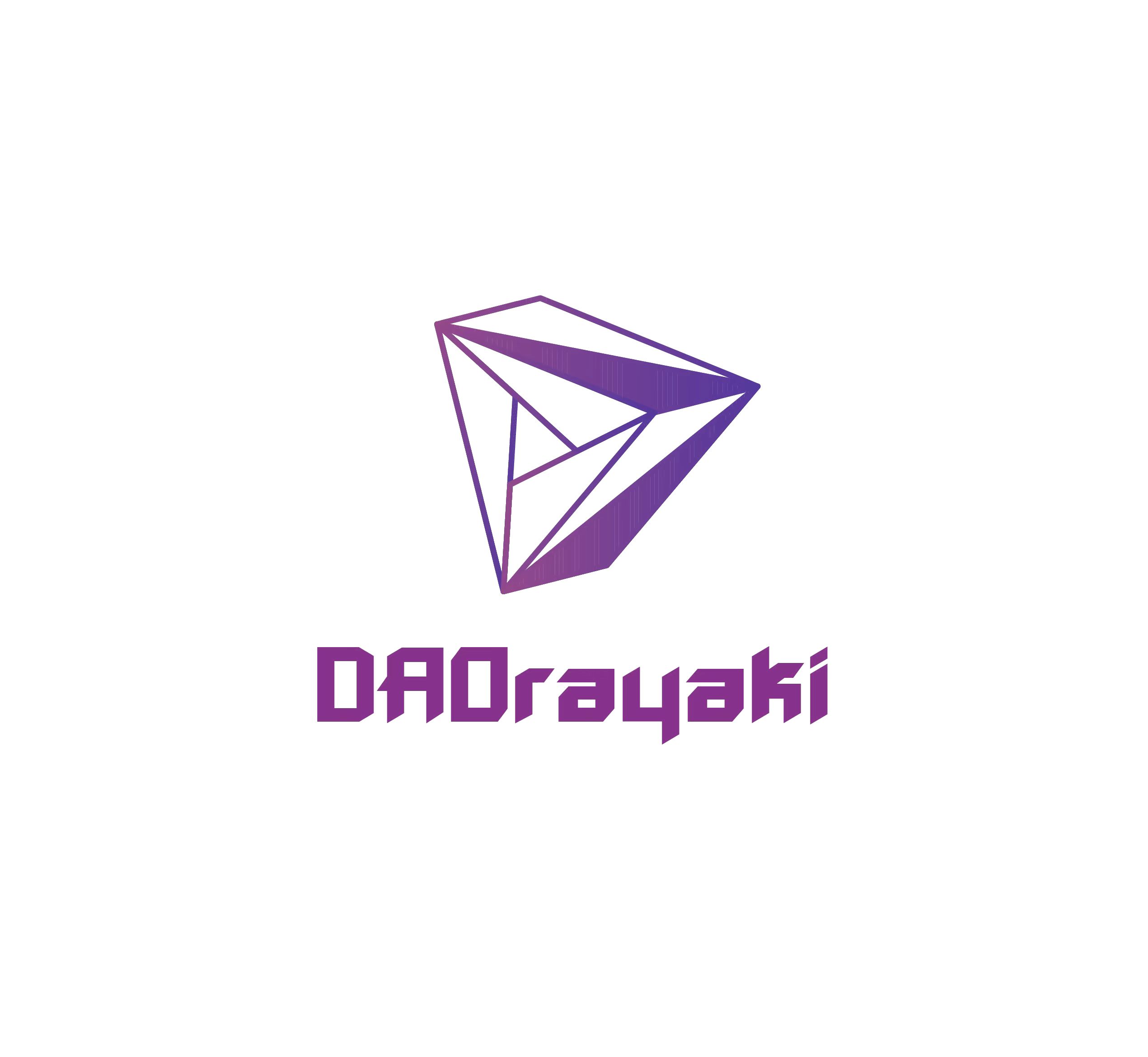DAOrayaki & THUBADAO:Web3.0时代的链上媒体平台、链上自媒体与媒体DAO
视频链接:
https://www.bilibili.com/video/BV1Qg 411 H 7 cE/? spm_id_from= 333.999.0.0
致谢
去中心化媒体和研究组织 DAOrayaki 公开资助 THUBADAO 展开独立课题研究,并进行公开成果分享。研究主题主要聚焦在Web3、DAO 等相关领域内容。本文是资助成果的首篇分享。
DAOrayaki 是一个代表社区意志、功能齐全的去中心化媒体平台和研究组织。旨在链接创作者、资助者、读者,并提供 Bounty、Grant、预测市场等多种治理工具,激励社区自由的展开研究、策展及报道多类话题。
THUBA DAO 是由清华大学区块链协会(THUBA)成员所发起的去中心化组织。THUBA DAO 致力于将Web3世界带给每一个学生,成为连接海内外区块链社区的桥梁,并培养最优秀的下一代 Web 青年与先锋者。
引言
媒体是Web3.0 时代中必不可少的生态配套。把媒体生态的定义扩大泛化,在万物皆媒的当下及未来,媒体不属于任何一个赛道却与每一个赛道息息相关,正因为其遍在性而少有研报进行分析:媒体从Web2.0 去往Web3.0 的转向中究竟所处何地?如将媒体生态缩小窄化,视作内容生态的子集,不同形态的媒体就是内容生产的原子,原生于加密世界的内容是否有可能跳脱出Web2.0 的窠臼,利用“可拥有性”引爆并沉淀用户进入Web3.0 的新世界?
这些问题都有待于探索与想象,本文将研究对象所言的“媒体”聚焦在信息与知识性内容规模化持续生产的链上媒体平台、链上自媒体与媒体 DAO(Decentralized Autonomous Organization, 去中心化自治组织)上。
依据整体的媒体市场规模迁移可能来看, 2022 年全球传媒产业产值约为 2.3 万亿美元,但这不会完整地迁移至Web3.0 世界,Web3.0 媒体将成为其重要的延伸与子集,如低估Web3.0 信息媒体占其比例为 10% ,也将有约 2300 亿美元的市场规模。 2022 年中国泛媒体应用用户规模在网络新闻上约为 7.88 亿,网民使用率为 75% (工信部、CNNIC 数据),网络信息媒体从Web2.0 向Web3.0 迁移的中国潜在用户可观。
Web3.0 时代的媒体界定
为了便于理解,我将对所涉及的三类媒体形态作定义与区分。首先是链上媒体平台:基于区块链技术搭建的内容生产平台,可确权并追溯,并通过代币机制激励内容生产,如 UGC 的 Mirror、PUGC 的新闻生产平台 Civil 与 DNN(Decentralized News Network),更加强调其作为平台的生产与分发展示的特性。链上自媒体则主要为个人或小组织依托于链上媒体平台进行内容的自产出并上链确权,比如在 Mirror 上开办专栏、开展内容众筹的 Mirror 用户。而媒体 DAO 则是比较新鲜的实验性存在,将内容生产的个体组织化但去中心化,在不需要采编权的前提下进行内容生产社区的共择共建,如 PubDAO 和一些 DAO 的媒体 SubDAO,强调其作为内容生产组织形式的特性。实际上,三者的发展相互交织,并没有特别强的分隔,比如 Mirror 实际上是 Mirror DAO 的 DAO tool,Mirror DAO 也会在 Mirror 上发布内容。
媒介技术变革下的媒体:cheaper or more expensive
实际上,媒体从网前时代,从Web1.0 到 2.0 ,正在以降价甚至免费的形式变得越来越贵,降价与免费的是大众获取信息的渠道,而越来越贵的是信息所涵盖的信息差所加总的总体价值。这样的转变得以实现是因为有广告这一价值转换器吞噬信息价值,且成为渠道的媒体作为中介将接收信息的大众打包售卖给了广告,广告也由此混沌于价值信息之中。而对于使用媒体的个体来说,他们在接受混杂广告的价值信息的过程中并不会因削弱信息获取的良好体验而获得好处,反而要为消费时所转嫁的广告成本付费,或者说他们本身也就成了媒体通过信息吸引并分类后所贩卖的广告的商品。Web3.0 时代通过代币机制激励媒体进行内容创作与分发,取代广告中介,为打破上述的“受众商品论”(达拉斯·斯麦兹, 1977 )提供了可能。
目前这样的可能性还在试验中,Mirror 是至此之时最成功的试验品,将内容存储在链上而非中央数据库中。这个加密原生的产品在推特上有近八万粉丝,去重付费用户近两万人,是Web3.0 世界中最主流的链上媒体平台,当然这与Web2.0 的媒体平台相比就显得小众而非主流了,可见Web3.0 的媒体发展仍处于非常早期的种子阶段,甚至不至于形成竞争格局,大家都以自己的形式偏安一隅。
当下驱动链上媒体发展的,是内容确权和代币激励的吸引,还有加密原生的身份认同。然而实际上,内容在链上确权后并没有合理的应用场景,媒体内容生产所获得的激励代币价值有限,大规模用户仍然处于“互联网都是免费的”这样被广告介入的消费观念规训之中,特别是对于新闻资讯来说更是“news is cheap”。使用加密原生产品的“加密元老”身份认同感,成为了激励不足的现阶段用户裂变的重要动力,比如在 Mirror 上线初期需要有$WRITE 代币才可以试用时,吸引了大批早期加密探索者四处求索代币获取渠道来使用 Mirror,且后在推特上自发宣传。
现阶段链上媒体发展遇阻,当然不只是因为用户未养成付费习惯。从宏观上看,加密货币总用户人数也限制了链上媒体用户人数,用户身份与用户生产内容的强关联性质导致链上媒体普遍聚焦于生产加密相关的信息内容,形成较为稳定的生产小循环而难以进入下一阶段。而 Civil、DNN 这样的链上新闻媒体平台,其生产的新闻信息更具有时效性,且需要突出规模传播价值,在这一阶段遇阻更加显著。
另外在中文区,进入加密世界需要翻墙、链接数字钱包并充值等操作,对于链上媒体平台来说使用门槛太高,转化率低下。从微观上看,产品功能有待完善,Mirror 作为链上媒体平台并没有阅读量显示、推荐展示,甚至没有聚合信息的检索渠道,关注其他用户只能使用插件生成 Feed 或者插件整合成 newsletter 发送至邮箱,这对使用过Web2.0 大厂产品后的用户来说,体验接近于返祖。在产品功能上,Mirror 这个头部玩家就像是还在蛮荒之地勤恳开荒中。
蛮荒之地的媒体垦荒:个人、平台与组织的交织
人是任何社会活动的最小单元,Web3.0 的去中心化给了每一个生产媒体内容的个体最大的自主参与权,并确保个体内容生产的劳动获益,不只是头部媒体人,腰部及长尾部分的内容生产者也需要且能够从中获益。这一愿景的实现需要以人为单位组合形成的交互体系,平台便是贯穿于互联网时代的重要集合产品,而去中心化自治组织则是在Web3.0 时代通过智能合约实现非中心监管以确定规则的新组织形式。
此前所说到的 Mirror,MVP 版本诞生于 2021 年 1 月,同年 10 月开始开放使用。实际上它作为内容生产工具,定位为 DAO 的社区基础设施之一,这也许也是它不在产品内部嵌入内容推荐与社交分享等功能,而是上线了共筹、NFT发布等功能的原因:希望由 MirrorDAO 内成员或整个对 Mirror 感兴趣的人组成的社区成员来在现有 Mirror 产品基础上进行新产品开发,也就是共创式发展,为此 Mirror 的主要数据也是在Arweave上存储并完全开放的,方便开发者使用并链接。Mirror 的搜索、订阅关注、策展推荐、跟踪最新文章与众筹等功能插件都是通过社区共创的形式诞生、使用的,但对于用户来说,功能的分散确实没有那么方便。
去广告化的媒体平台又该如何盈利?Mirror 的盈利实际上来自众筹与铸造 NFT 拍卖等辅助功能的平台 2.5% 分润,在 22 年 4 月,Mirror 就有近百万美金的营收进入国库。不过由于熊市来临,ETH币价下跌幅度破 70% 叠加活跃度下滑,Mirror 国库在 ETH 本位上增幅递减,U 本位上大幅缩水。Mirror 国库又将激励并支持 DAO 的贡献者认领项目悬赏任务,悬赏与 DAO 工资的数额都由 DAO 投票决定,对 DAO 贡献者的额外奖励也由成员的相互评估换算,国库支出主要为USDT而并非高波动的 ETH 或治理代币$WRITE。
Mirror 上活跃着大批加密用户,其中部分用户在 Twitter 等平台具有一定粉丝量与影响力,但 Twitter 等Web2.0 社交媒体发布篇幅有限,不适合发布的长篇深度高价值内容,而这样的内容恰好适合上链确权,迁移至 Mirror 可以说是顺理成章。他们也乐于通过使用 Mirror 这样的Web3.0 加密原生媒体产品来沉淀输出、加深加密身份、打造个人品牌,由此成为了链上自媒体。目前的链上自媒体普遍与加密强相关,行情分析、项目研报、日报资讯、投资成长、加密科普等主题的内容是链上自媒体所热衷输出的。优质的内容会得到打赏、可拍卖获得收益之外还有机会获得 Mirror 的治理代币奖励,如 DAO 的强烈爱好者与参与者 Shawn 就通过在 Mirror 上记录他关于参与各种 DAO 的感想与经历,成为了 Mirror DAO 成员。
与 Mirror 类似但聚焦于新闻生产的 Civil 与 DNN 实际上是比 Mirror 更加早期的链上媒体平台,进行了新闻上链生产的尝试。Civil 开始运营于 2016 年,旨在创建一个全部由公众拥有和经营的去中心化的可信赖新闻媒体,在 2018 年开始正式发行基于以太坊链上的功能代币 CVL 以激励新闻制作人(newsmaker,包括生产者与核查者),公民读者(citizens)通过 CVL 购买新闻。BBC、美联社、卫报等新闻机构加入 Civil 需要在委员会(Civil Council)审核,再经过平台登记所(Civil Registry)花费一定 CVL 并签署平台条约(Civil Constitution)后注册为新闻工作室(Newsroom)进行新闻议题与内容的发布。
公民读者或专业记者都可以认领事实核查任务获得奖励,如有不实新闻或劣质新闻,在公民投票认定后将由委员会进行公开审查并处理,不良工作室的 CVL 将奖励给核查与投票者。用户在 Civil 上进行新闻发布、阅读、投票等行为均上链盖上时间戳,是公开且透明的,其中的良性行为都将获得代币奖励,但消耗代币的机制并不完善,并没有大批量的读者耗费 CVL 为阅读新闻买单,最终 Civil 在 2020 年因经济运行难以为继而宣告失败。
去中心化的规模化新闻生产链上媒体平台实验宣告失败, 2022 年又出现了小规模的新闻 DAO——JournoDAO,立志于通过去中心化自治组织的形式进行新闻生产,从 4 月至今一直没有突破冷启动关口,参与人数不足,半年内甚至没有产出新闻,后续发展有待观察。JournoDAO 的创建者之一 Clinamenic 也是目前专注于媒体内容生产的 PubDAO 这一媒体 DAO 的核心贡献者。
PubDAO 成立于 2021 年 10 月,由Web3.0 媒体 Decrypt 与其他 DAO 的贡献者(如 FWB DAO 等)帮助孵化,召集了一百多名在“Web3.0+impact+media”交叉点工作的早期贡献者进行专项写作。成员可以在 DAO 内认领文章写作任务,获得美金奖励,文章任务也许来自于其他项目方,如结合 Meme.Market 探究迷因病毒式传播概念的文章项目, 300-500 词奖励 150 U。
不过目前来看,Pub DAO 至今活跃度仍然不高,特别是在进入熊市后,接受投稿但产出也比较有限,单月更新大概是 2-3 篇,被评价为“昙花一现”;产出展现也比较分散,这一点在其推特所发布的文章分处不同平台链接上可以比较直观地体现。
荒地为何成为荒地,又该如何开出第一朵花?
整体而言,目前Web3.0 时代的媒体可以用一个词评价:“未成气候”。
首先从受众与生产者的视角出发,进入Web3.0 的门槛过高,触达链上媒体的用户规模不足,同样媒体内容生产者也不足,与此同时用户付费意识不强,所以链上媒体平台发展遇阻,媒体 DAO 也人手不足。
从内容上来说,如此规模的内容生产者与阅读者,无法支撑高时效性的新闻持续性生产,对于加密市场相关的强专业性媒体内容来说,因受众与用户兴趣耦合而存在小规模阅读市场。
再从渠道上看,Web2.0 的专业媒体如英文区的 Coin Desk、CoinTelegraph,中文区的 Foresight News、Odaily、Panews 等的存在很大程度上瓜分了加密新闻资讯触达用户的渠道市场,而Web3.0 的媒体内容生产没有集合性较强的平台产品,触达用户的渠道分散,造成链上自媒体在Web3.0 时代沉淀个人品牌似乎也还是依托Web2.0 产品的境地。另外目前的产品较为早期,没有整合共创功能以至不符合用户使用习惯,或没有解决盈利激励性不强、生产效率不高等用户的核心痛点。
除了上述三个方面,市场的熊牛转换的宏观周期,在小时间窗口内也一定程度上扼杀了支撑媒体试验性发展的可能,虽然说熊市 Build,但真的有那么多人在熊市里留下来并保持热情吗?又真的能有人对媒体进行逆势投资或消费吗? 22 年的熊市无疑对Web3.0 时代的媒体垦荒来说是雪上加霜。
在未成气候的蛮荒之地上,越是荒芜就越是充满可能。毕竟气候不是单蛮力所能改的,也并非只看一朝一夕。不论是 Mirror 的内容生态共建尝试、Civil 的新闻内容上链生产模式尝试还是 PubDAO 的媒体内容生产组织尝试,目前所进行的这些试验都一定程度上让我们勾勒了一下Web3.0 时代的媒体生态的交织样貌,即使遇阻或失败,也是勇敢而成功的。
需要明确的是,Web3.0 时代的媒体是Web3.0 生态的配套设施,而并非基础建设。在垦荒的道路上踽踽独行确实难以为继,共识的世界里,人永远是价值品,当 Infra 生态不完备、Web3.0 进入门槛依然较高而难以破圈获得大规模用户时,此处依然无水无肥。着眼脚下,Mirror 的共建生态也可以给予我们启发,去中心化开发出一个个功能模块拼装也许也是种花之道,等待下一个周期内借人与资金的涌入拼装完整的产品,优化用户体验。
此外,必须拓展非加密内容的圈层可能,比如 Mirror 的电影拍摄共筹,便化用吸纳了电影产业的长尾部分进入Web3.0 时代,链上媒体可以与实体经济有更多的勾连,需要找到合适的场景切入,展现链上确权与数据个人身份的优势。
相信在荒地上开出第一朵花的时候,距离鲜花遍野也不会太远。
参考文献
[ 1 ]林丹菁,何扬鸣.区块链技术驱动下的公民新闻发展——基于 Civil 的个案研究[J].青年记者,
2022( 04): 36-38.DOI: 10.15997/j.cnki.qnjz.2022.04.052.
[ 2 ]谭小荷.基于区块链的新闻业:模式、影响与制约——以 Civil 为中心的考察[J].当代传播, 2018( 04): 91-96.
[ 3 ]史安斌,杨晨晞.Web3.0 时代的国际传播与公共外交:趋势与愿景[J].青年记者,
2022( 15): 93-97.DOI: 10.15997/j.cnki.qnjz.2022.15.030.
[ 4 ]杭敏,綦雪.2021 年全球传媒产业发展报告[J].传媒, 2022( 16): 16-21.
[ 5 ]泓君.真正的Web3到底离我们有多远?从 Mirror 的创作者生态说起[EB/OL].https://mp.weixin.qq.com/s/iRymlN7f_sd3eYCrsJQYxA
[ 6 ]CTR 洞察.内容创新与经营破局: 2022 中国媒体市场趋势 | 芒种报告[EB/OL].https://mp.weixin.qq.com/s/GLgr7hkSRVQwjfl8fkRlow、
[ 7 ]刘忠波.「区块链」新闻平台规模化,有多远?| 德外荐读[EB/OL].
https://mp.weixin.qq.com/s/T_iF 43 jPMGlT 8 IE 2 D_CB 0 g
[ 8 ]Shawn.《Mirror 分析》系列[EB/OL].
https://shawn.mirror.xyz/slyqZ4T7fkcsVY5QR0vKeAc1R-y3i7J6iMnjMVvFEOk



